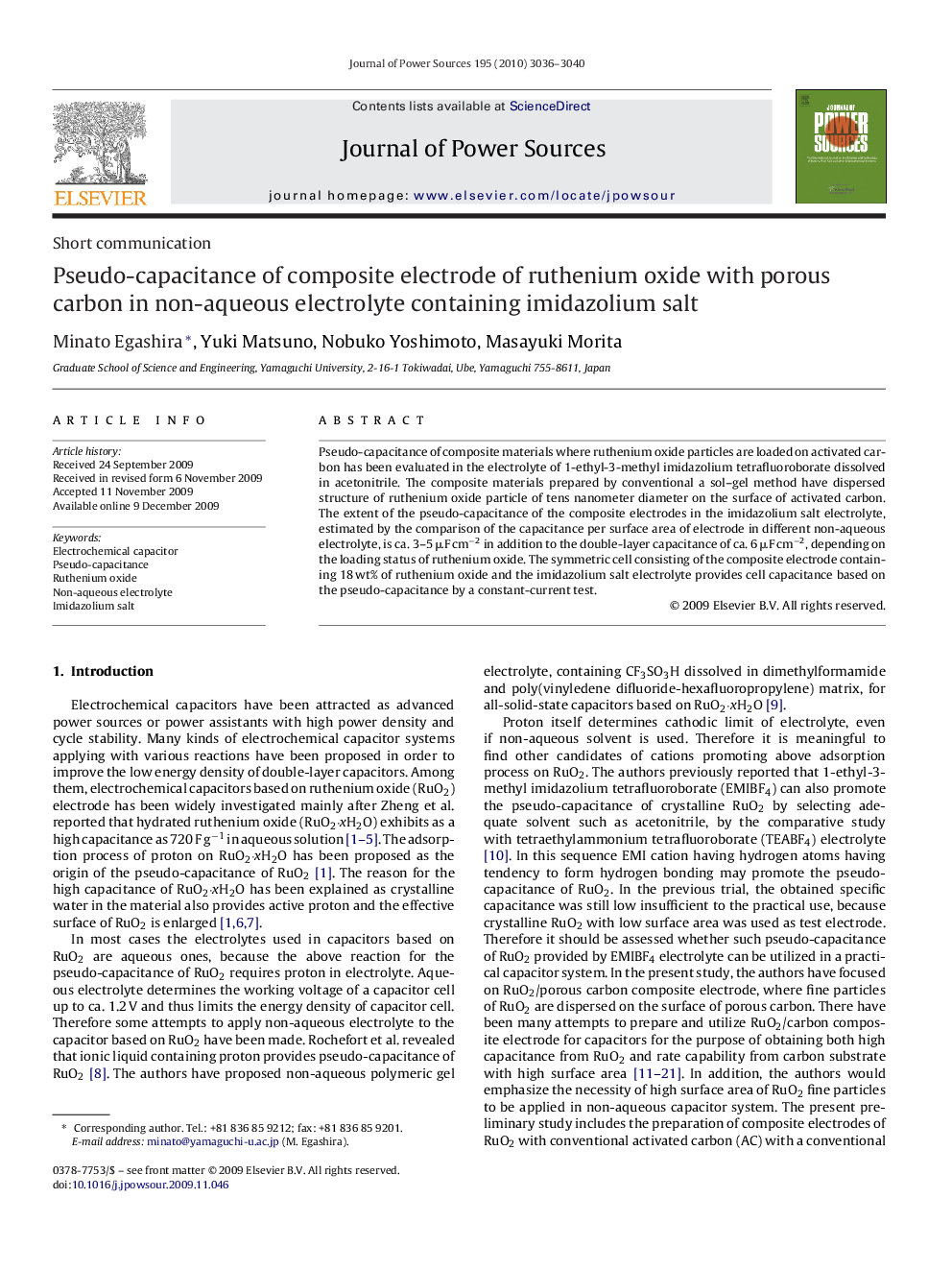| Article ID | Journal | Published Year | Pages | File Type |
|---|---|---|---|---|
| 1285074 | Journal of Power Sources | 2010 | 5 Pages |
Pseudo-capacitance of composite materials where ruthenium oxide particles are loaded on activated carbon has been evaluated in the electrolyte of 1-ethyl-3-methyl imidazolium tetrafluoroborate dissolved in acetonitrile. The composite materials prepared by conventional a sol–gel method have dispersed structure of ruthenium oxide particle of tens nanometer diameter on the surface of activated carbon. The extent of the pseudo-capacitance of the composite electrodes in the imidazolium salt electrolyte, estimated by the comparison of the capacitance per surface area of electrode in different non-aqueous electrolyte, is ca. 3–5 μF cm−2 in addition to the double-layer capacitance of ca. 6 μF cm−2, depending on the loading status of ruthenium oxide. The symmetric cell consisting of the composite electrode containing 18 wt% of ruthenium oxide and the imidazolium salt electrolyte provides cell capacitance based on the pseudo-capacitance by a constant-current test.
